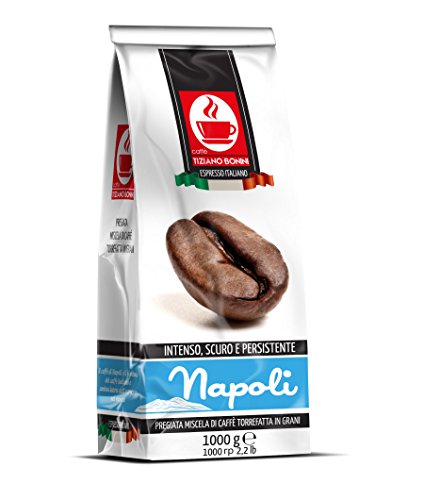Starbucks Coffee Beans 1kg
Starbucks was a cozy cafe located in Seattle Washington prior to when it was famous for its Peppermint Mochas and red holiday cups. Starbucks' founders were focused on selling whole beans of coffee, but didn't realize the potential in espresso drinks.
This changed when Schultz stepped in. He was determined to demonstrate his roasting and mixing techniques.
Origin
Starbucks coffee beans have a long, winding journey before they get to your cup. The majority of the world's coffee beans are grown in the Coffee Belt, which stretches across the globe between the Tropics of Cancer and Capricorn. The taste of coffee beans is affected by the climate, soil and the culture of the region. Starbucks sources its coffee beans from more than 30 countries.
Starbucks coffees are mainly sourced from Latin America, Africa and Asia-Pacific. These regions are famous for their full-flavor and balanced of body and acidity. Starbucks also purchases coffee from St. Helena in the South Atlantic Ocean, a volcanic tropical island paradise.
Starbucks coffee beans are roasted to perfection, resulting in an incredibly smooth and delicious taste. The coffee beans are ground into a fine powder, and ready to be brewed. The powder is then mixed with water and poured into a cup, creating an espresso drink that is delicious. The result is a cup full of flavor and energy.
Starbucks stores offer a range of single-origin beans. While the majority of Starbucks coffees come from blending various beans, they also have some varieties made with only one bean. Single-origin Starbucks coffees come in many flavors, including fruity and chocolatey sweet and sweet and. Some single-origin coffees are even certified organic.
Although Starbucks's beans are sourced from all across the globe however, they must meet certain requirements to be considered specialty coffee. The term "specialty coffee" was only introduced in the 1980s, as cafes and roasters started to experiment with lighter roasting, manual techniques, and transparent sourcing. Starbucks didn't start making its coffee sourcing decisions based on these standards until recently, but has since adopted them.
In addition to ensuring that its beans are cultivated in a sustainable way, Starbucks works to improve the lives of those who grow their coffee. It pays its coffee farmers an extra amount over the market price and helps to invest in their communities. It also promotes sustainability and works to reduce waste. This has led to the creation of new techniques for coffee cultivation and practices that protect the environment.
Roast

Starbucks roasts beans in large quantities and buys the beans in large quantities. The roasting process takes between 10 and 15 minutes, and the resultant dark roasted beans. The beans that are dark roasted have an intense flavor and full body. The beans are ground and then delivered to stores and supermarkets in the form of coffee grind. The majority of the time, this ground coffee is not ideal for making the most delicious cup of coffee because it is already bitter. Most people add lots of sugar, cream or milk as well as flavorings and whipping cream to their coffee. This will not mask the bitterness in the coffee, but it does make the drink more appealing.
When the beans are placed in the roaster, they begin to steam because of their internal moisture. The "first crack" is an audible noise that signals the start of the roasting process. At this point the sugars begin to caramelize, and the water that has been encased is beginning to escape. In this stage the structure of the beans breaks down and the oils begin to flow outward. This stage is the time at which most coffees are considered a city roast.
The roasted beans are then removed from any stones or other impurities, that might have escaped the roaster. They are then examined by hand before being packed and sold. Some beans have a dark spot called the quaker. These beans did not change color or taste burnt. This is a common condition and does not suggest that the coffee is not good.
The beans are usually roast in small batches, sometimes as little as 20 pounds. They are referred to as "micro-lots". This is because each coffee will be roasted according to specifications created by the Starbucks team of masters of coffee. The team of coffee experts creates distinctive profiles that are utilized by all Starbucks(r) roasting facilities around the globe. These profiles ensure that each cup of coffee is consistent and has a certain amount of body, flavour and aroma.
Flavor
Starbucks purchases their coffee from the farm they come from so that they can help to improve quality and ensure an ethical source. For every pound of coffee beans sold, Starbucks plant a tree. The beans aren't labeled with their origin, but certain blends are. Veranda is from Sumatra; Komodo Dragon is from Indonesian; and Anniversary is a blend of african and central american beans. Best coffee beans 1kg have a unique flavor profile and produce smooth cups with a delicate blend of sweetness and smoothness. Every sip is a symphony of flavours and leaves a lasting, pleasant taste on your palate.
Weight
The weight of Starbucks beans 1kg is determined by the blend. A Starbucks House Blend, for instance, weighs 14 oz per pound. A pound of Espresso-roast beans at Walmart however, weighs 16 ounces. Best coffee beans 1kg translates into an additional 67% in cost at Starbucks in comparison to Wal-Mart.
Starbucks' Pike Place Roast is named after the iconic Seattle market. Its medium-light roast gives balance, sweetness and smoothness in every cup. This blend made of beans from Latin America is perfect for Americano or espresso. This premium blend comes with a FlavorLock package to protect the coffee and for preservation of flavor. This is Starbucks the classic signature coffee. A perfect choice for coffee lovers! Made with 100 percent Arabica beans. This is a great present for Starbucks lovers.
